물·공기·액상·가스 등에 함유된 불순물질 및 맛·냄새 유발물질 흡착 통해 제거
Global Issue Technology
GAC, 수처리 플랜트 흡착·여과용 메디아로 주목받아
(입상활성탄)
물·공기·액상·가스 등에 함유된 불순물질 및 맛·냄새 유발물질 흡착 통해 제거
미국 EPA·주정부, “지표수 내 다양한 유기물질 제거에 가장 효과적인 기술” 인정
GAC(입상활성탄)는 물, 공기, 액상, 가스 등의 불순물을 흡착 작용을 통해 제거할 수 있어 흡착·여과용 메디아로서 역할이 주목된다. 이에 활성탄, 재활성화 공정에서 자외선 살균·산화, 이온 교환 기술, 밸러스트 수처리 등의 전문기업인 칼곤 카본(Calgon Carbon)사의 더그 콘리(Doug Conley) 마케팅 매니저가 『Water Technology』를 통해 이러한 사항들을 검토했다. 그 내용을 번역했다. [자료제공·번역 = 김덕연 본지 편집위원]
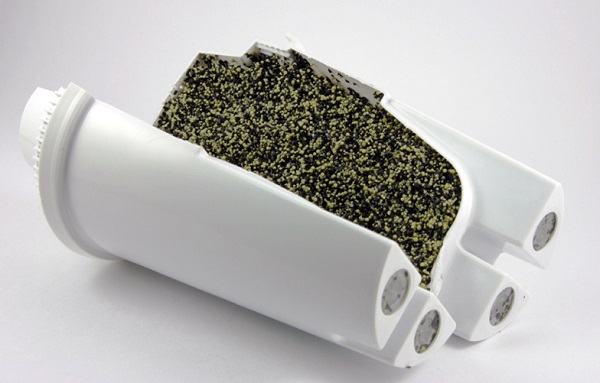
입상활성탄(GAC) 개요 (About granular activated carbon)
입상활성탄(GAC, Granular Activated Carbon)은 자체의 흡착 기능을 통해 물, 공기, 액상, 가스 등에 함유된 불순물 제거에 탁월하며, 비(非)그래파이트(nongraphitic) 형태의 탄소결합에 의해 내부적으로 연결된 그래파이트 판(graphite platelets) 물질이 다양하게 구성된 하이브리드 복합물질이다. 또한 가열산화 방법에 의해 재활성화 되며 동일한 적용으로 중복사용이 가능해 환경 친화적이다. 이에 미국 환경보호청(EPA), 주 정부 건강담당국은 GAC에 의한 흡착기능을 지표수 내에 함유된 다양한 유기물질의 제거에 가장 효과적인 기술(BAT, Best Available Technology)로 주목하고 있다.
이처럼 GAC는 자체·개별적으로 적용하거나 UV기술을 복합해 사용했을 때 △염소 및 다른 소독제 사용과 관련된 소독부산물(DBPs, Disinfection Byproducts) △조류독성물질 (Algal toxins) △내분비호르몬 교란물질(Endocrine-disrupting compounds) △제약회사 약제 및 개인 건강보호제품 △맛·냄새 유발물질 △소독부산물 전구물질(precusor)로 작용하는 자연 발생 물질 및 황폐화된 산림으로부터 생성되는 유기물질 등을 제거할 수 있어 효과적이다.
The adsorptive capacity of GAC makes it ideal for removing a variety of contaminants from water, air, liquids and gases. Granular activated carbon(GAC) is a hybrid mixture of a wide variety of graphite platelets that are interconnected by nongraphitic carbon bonding. GAC is also an environmentally responsible product that can be reactivated through thermal oxidation and used multiple times for the same application.
The U.S. Environmental Protection Agency(EPA) and most state-based departments of health consider adsorption by GAC to be the best available technology for the removal of many organic materials in surface water.
On its own or paired with an ultraviolet(UV) disinfection system, GAC can facilitate the removal of:
·Disinfection byproducts(DBPs) associated with chlorine and alternative disinfectants
·Algal toxins, such as microcystin-LR, cylindrospermopsin and anatoxin-A
·Endocrine-disrupting compounds
·Pharmaceuticals and personal care products
·Taste and odor-causing compounds
·Organic materials from decaying plants and other naturally occurring matter which serve as the precursors for DBPs
The following is a review of the fundamental aspects of activated carbon and specifically the use of GAC as a filter and adsorbent in potable water treatment.

UV기술과 복합사용 시 소독부산물·조류독성물질·환경호르몬·이취미 물질 등 제거 가능
흡착 성능·마모 내성·밀도 등 GAC 특성과 기존 필터를 GAC 대체 시 경제성 검토 필요
활성탄소의 제조 및 생산 (Activated carbon production)
활성탄소(activated carbon)는 역청탄(bituminous coal), 무연탄(anthracite), 역청탄 부산물(subbituninous coal), 갈탄(lignite), 목재, 코코넛 셀·토탄(peat) 등 다양한 탄소함유 전구물질에서 생성된다. 이러한 물질들은 가열방식 혹은 케미컬 활성화 공정을 통해 활성탄소로 변환된다. 가열방식은 스팀 활성화(steam gasfication, activation) 방법이 일반적으로 사용되고 케미컬 활성화 공정은 비교적 낮은 온도에서 활성화 무기물질을 첨가해 활용된다.
역청탄(bituminous coal)으로 생성되는 활성탄소는 직접 활성화(direct activated), 재응결 방식(reagglomerated)으로 분류된다. 직접 활성화 방법은 석탄을 필요한 최종입자 크기로 분쇄해 정형화하며 크기가 정형화된 석탄을 가열·활성화시키는 공정으로, 재응결 방식에 비해 낮은 비용으로 생산이 가능하다.
Activated carbons are produced from a wide variety of carbon-rich precursor materials such as bituminous coal, anthracite, subbituminous coal, lignite, wood, coconut shells and peat. These materials are converted into activated carbon by either thermal or chemical activation processes. Thermal treatment typically includes steam gasification(activation) and chemical activation uses reactive, inorganic additives at relatively lower temperatures.
Activated carbons produced from bituminous coal can be classified as direct activated or reagglomerated. Direct activation involves sizing the coal to approximately the final particle size required and thermally activating the sized coal. Direct activation can produce a less costly product compared to reagglomeration.
흡착 (Adsorption)
흡착기능은 활성탄소와 같은 흡착제의 전자구조 물질, 지오스민 등 맛·냄새 유발 물질끼리 흡착이 이루어지는 물질 간의 상호작용이다. 분자구조로 된 물질은 키네틱(kinetic) 운동이론에 의해 활성탄소의 다공성 표면으로 유인된다.
Adsorption results from the interaction of the electronic structure of an adsorbent, such as activated carbon, with an adsorbate, such as a taste-and odor-causing compound like geosmin. Molecular compounds are kinetically attracted to the porous surface area of the carbon.
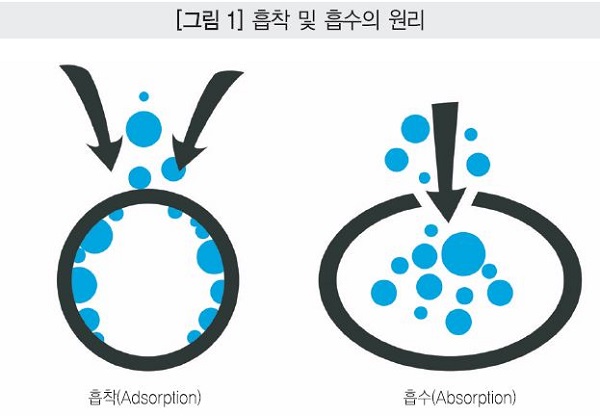
GAC는 수처리 플랜트에서 효과적인 물리적 여과용 메디아(media)인 동시에 맛·냄새 유발물질 및 케미컬 물질을 흡착해 수질을 보호한다. 이에 기존 다단계여과(MMF)에 GAC를 접목하거나 새로운 GAC 필터를 설계할 때 수력학적 요구사항, 여과체류 시간, 역세 가능성 등 실제 적용을 위한 다양한 검토가 필요하다. 한편, 흡착 성능 및 마모에 대한 내성·밀도 등 GAC의 특성뿐만 아니라 기존 필터를 GAC로 대체하기 위한 경제성도 검토되어야 한다.
역세 요구사항은 GAC 베드(bed)의 깊이를 결정하는 데 영향을 주는 요소이다. 이처럼 필터 설계 과정에서는 적절한 베드 깊이를 고려해 메디아 확장 시 베드 상단부와 역세 공간의 하단부 사이에서 충분한 길이로 공간을 설계해야 한다. 물의 속도는 이러한 공간에서 증가하므로, 공간 사이의 일정 수준까지 확장되는 GAC 필터 내에서 세척배출이 효과적으로 이루어져야 한다.
기존 필터를 개조해 GAC를 설치하거나 새로운 필터 설계 시에는 모래·무연탄 메디아의 설치 원리와 유사하다. 단, 필터 및 초기의 자갈·모래 혹은 하부배출·모래 구조체가 GAC 필터의 설치 전에 살균소독이 이루어져야 한다는 점은 예외이다. 이를 통해 염소와 같은 살균제가 GAC와 빠른 속도로 반응해 소독부산물이 발생되는 것을 방지할 수 있다.
또, 최종 역세 이전에 GAC가 24시간 동안 침지 상태로 있어야 되며 이후 새로운 필터는 정상 서비스 모드로 전환된다는 점에서도 차이가 발견된다. 이러한 침지 과정 동안 GAC 기공구조 내에 포획되었던 공기가 빠져나가게 되어 순수한 물이 GAC 내부표면을 완전히 채운 상태로 만들 수 있다.
GAC has also shown to be an effective physical filtration medium in water treatment plants, and has the added benefit of providing water quality protection by adsorption of taste and odor compounds or chemical contaminants. Prior to retrofitting an existing multimedia filter with GAC, or designing a new GAC filter, several practical considerations are necessary, including hydraulic requirements, filter on-stream time, and backwash water availability. The properties of the GAC, such as adsorption performance, abrasion resistance and density must be considered as well. Additionally, the effective cost of converting the filter to GAC must be evaluated.
Backwashing requirements are another factor affecting how deep the GAC bed should be, particularly when retrofitting a multimedia filter. The filter design should allow for the optimal expansion while allowing several inches of clearance between the top of the expanded bed and the bottom of the backwash trough. Since the water velocity increases between the troughs, any GAC that is expanded to the level between the troughs will more than likely be washed out of the filter.
The mechanics of installing GAC in a filter retrofit or in a new filter are much the same as for installing sand and anthracite. A notable exception is that the filter and initial gravel/sand or underdrain/sand support must be disinfected prior to installing the GAC. This is because suitable disinfectants, such as chlorine, will rapidly react over GAC, leaving no disinfectant residual.
A second variance is the GAC should be submerged for 24 hours prior to the final backwash before bringing the new filter into service. This soak time allows the air entrapped within the GAC pore structure to be removed and it allows the water to thoroughly wet the GAC internal surface.

열처리 과정에서는 탄소성분의 모든 원재료가 응축반응에 의해 점차 커다란 크기의 방향족판(larger aromatic plate) 구조체로 변한다. 여기서 구조체 밀도는 원재료 특성에 따라 영향을 받으므로, 역청탄과 같이 원재료가 치밀하면 구조체 밀도는 더욱 커진다.
평면 판상체 구조의 그래파이트 판(flat graphite platelets)은 GAC 물질 내에 불규칙적으로 배치되어 흡착에 필요한 정도로 확장된 내부구조가 형성되며, 활성탄소 생산 공정을 통해 다양한 크기의 기공을 가진 구조체가 만들어진다. 이는 그래파이트 판과 결합한 형태로 형성된 기공으로, 강한 물리적 흡착 기능을 가진 흡착제 물질이 만들어짐에 따라 이러한 구조로 흡착되는 흡착저장량은 최대화된다.
Reagglomeration involves first pulverizing and briquetting the coal with organic binders. The briquettes are stage crushed to achieve the desired particle size. Once the reagglomerated material has been activated, the binder is also converted to a graphitic structure that interconnects the activated coal particles. The hardness and abrasion characteristics of reagglomerated and direct activated GAC are often comparable. However, reagglomerated carbons tend to have a more homogenous pore structure that can be better for certain organic contaminant removal.
During thermal treatment, all the carbonaceous raw material reacts by means of condensation reactions to form increasingly larger aromatic plate structures. The density of the structure is influenced by the characteristics of the raw materials. The denser the raw material, such as bituminous coal, the more extensive the structures will be. These extended flat graphite platelets are arranged randomly within the GAC particle to provide the extensive internal structure needed for adsorption to occur.
The activated carbon production process also yields a structure with a broad range of pore sizes. These pores, or voids, in conjunction with the graphite platelets, generate a material with the strongest physical adsorption forces available in an adsorbent, coupled with the largest volume to store the adsorbed materials.
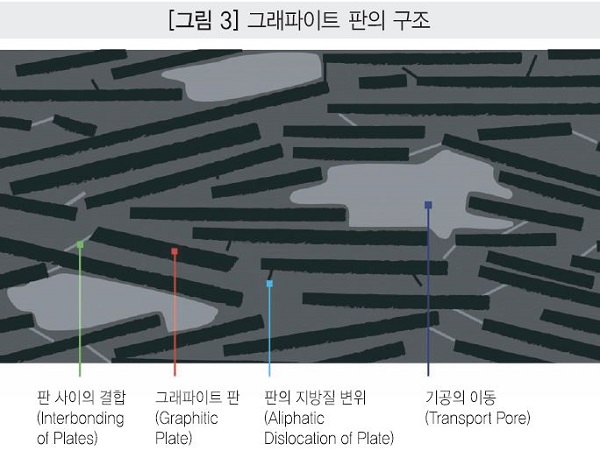
전형적인 GAC 필터는 일반 다단계여과(MMF) 필터와 동일한 운전상 결함에 민감하게 반응한다. 때문에 필터 내에서 실제로 운전될 때 역세 및 초기 가동 과정에서 물의 속도가 급격히 변화되서는 안 된다. 이에 필터 장치 설계 시 전체 운전시간 내에서 역세로 전환하는 데 최소 30초의 시간이 주어져야 하며, 장치가 정상운전으로 돌아오는 데에는 최소 10분의 시간이 필요하다. 따라서 작업자는 역세 과정 동안 물의 농도 변화를 충분히 인식해 역세과정을 주기적으로 관찰해야 한다.
한편, 필터를 효과적으로 관리하기 위해서는 연간 1회의 핵심부품(core sample) 채취가 필요하다. 이는 필터의 핵심부에서 정확한 시료를 채취한 후, 채취된 시료에 대한 요오드검사(iodine number test)를 실시해 잔여능력(residual activity) 여부를 조사한다. 과거 데이터에 따르면 검사를 통해 요오드수치(iodine number)가 450∼550 사이로 조사된 경우 빠른 시일 내에 GAC를 다시 활성화시켜 사용하거나 새로운 것으로 교환해야 한다.
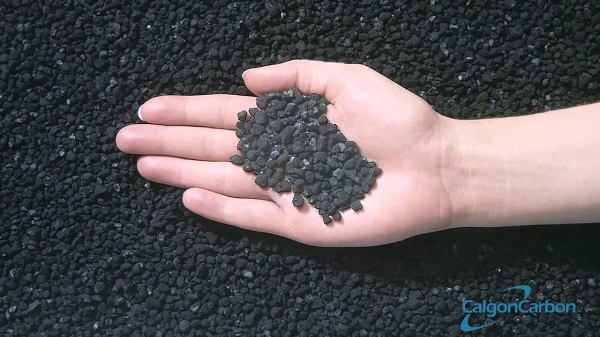
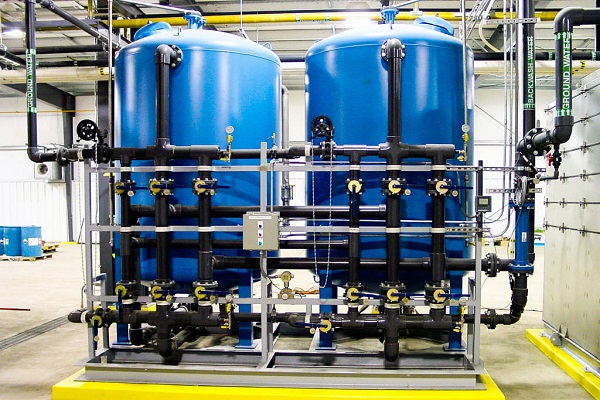
[『워터저널』 2016년 7월호에 게재]

